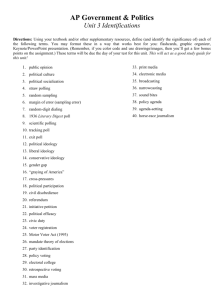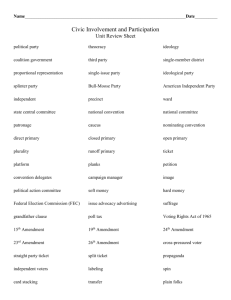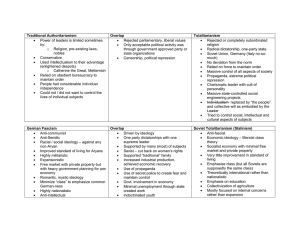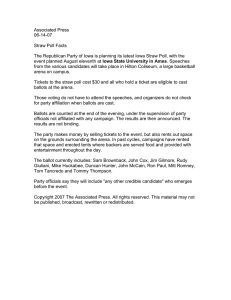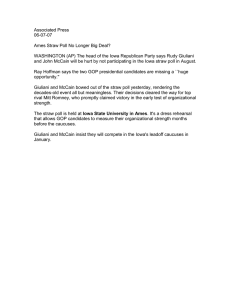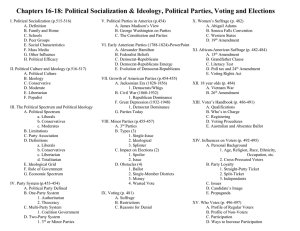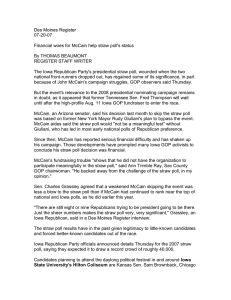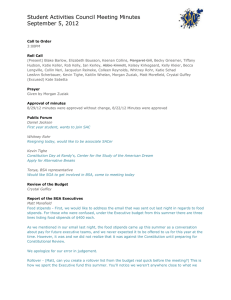K Study Guide Political Participation Part 1
advertisement
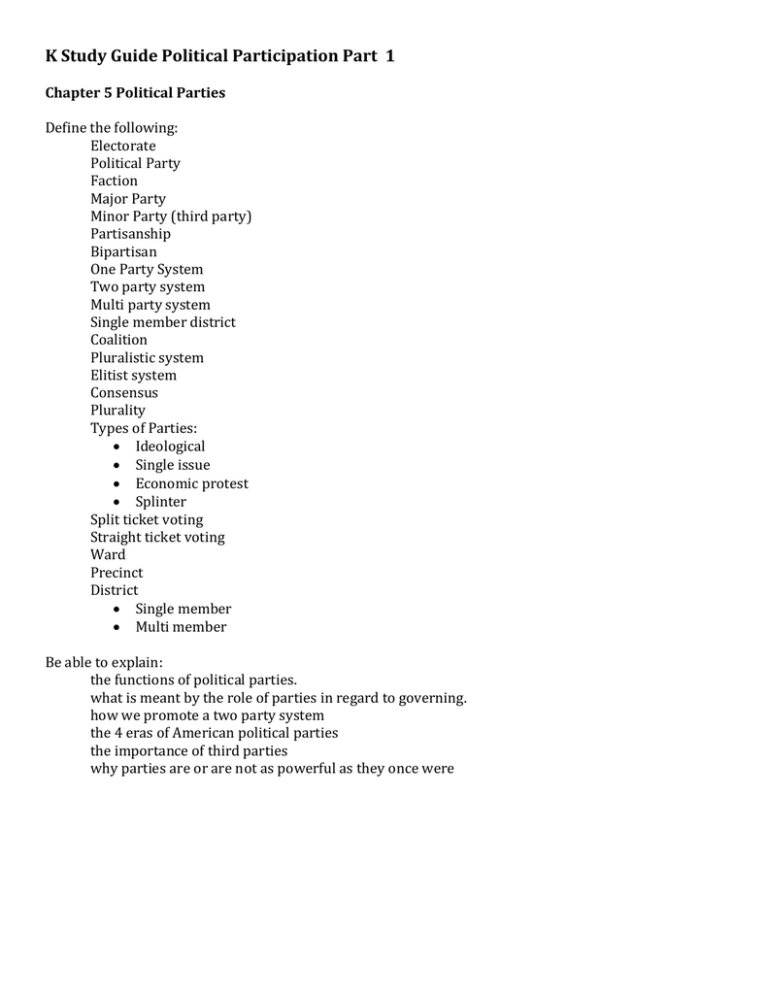
K Study Guide Political Participation Part 1 Chapter 5 Political Parties Define the following: Electorate Political Party Faction Major Party Minor Party (third party) Partisanship Bipartisan One Party System Two party system Multi party system Single member district Coalition Pluralistic system Elitist system Consensus Plurality Types of Parties: Ideological Single issue Economic protest Splinter Split ticket voting Straight ticket voting Ward Precinct District Single member Multi member Be able to explain: the functions of political parties. what is meant by the role of parties in regard to governing. how we promote a two party system the 4 eras of American political parties the importance of third parties why parties are or are not as powerful as they once were Chapter 8 News Media/Public Opinion Define the following: Public affairs Public opinion Political socialization Political ideology Peer groups Mass media Mandate Interest groups Public opinion polls Straw votes Samples Random sample Quota sample Medium Public agenda Sound bite Be able to explain: The fact that there is not just one public opinion Where we get our political ideology How we measure public opinion and which method is most reliable The difference between a scientific poll and a straw poll Where people get their political information The effect of the media on the agenda and electoral politics Chapter 9 Interest Groups Define: Public Policy Trade associations Labor Unions Public interest group Single interest group Pressure groups Lobbying Grass roots Propaganda Nation of joiners Be able to explain: How interest groups interact with the different levels and branches of government The difference between interest groups and political parties Goals Actions Constituency Different types of interest groups Different methods of propaganda and why it is used
